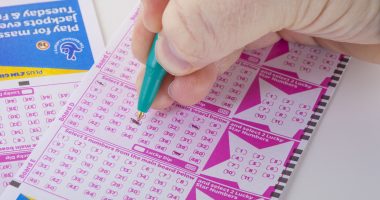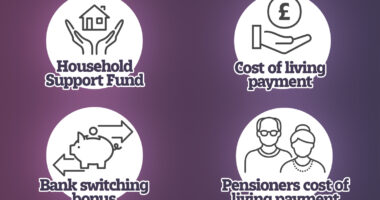ALMOST one million people are missing out on up to £2,000 from a lost bank account.
Child trust funds (CTFs) were given to every child born between September 1, 2002, and January 2, 2011.
The cash is tied up until the child turns 18 and the first cohort gained access in September 2020.
But more than £1.7 billion in CTFs has not yet been claimed, the Public Accounts Committee has said.
The committee’s report found that a million young adults – or 42% of all 18 to 20-year-olds entitled to the money – are missing out on it.
It is now calling on HMRC to do more to find and contact the young people, many of whom are from low-income backgrounds.


The report also found that providers are earning “very high” fees of up to £100million a year for passively managing CTFs, while not doing enough to link up forgotten accounts with their owners.
Many children received a starting payment voucher of £250 each from the government at the time their CTF was started.
While those from low-income families or in local authority care received an additional £250, or £500 in total.
The average value of the unclaimed accounts is around £1,900 each, it is estimated.
Most read in Money
PAC chair Dame Meg Hillier said: “In an ongoing cost of living crisis, our young people need every bit of support we can give them.
“HMRC still has time to make sure that CTFs are given the chance to be the boost to young people’s futures which they were designed to be.”
It comes after it was revealed that families of 80,000 disabled children were left unable to access £210million trapped in CTFs.
We spoke to one family who eventually reclaimed £6,000 from a CTF for their disabled daughter.
Sarah Coles, head of personal finance, Hargreaves Lansdown, said that it is “unspeakable” that millions of young people are missing out on much-needed cash, especially during the cost of living crisis.
She said: “Those on lower incomes and those whose parents weren’t financially engaged when they received their voucher – so never knew where it was invested – are the most likely to be completely in the dark.
“They’re also more likely to need it most. It says some providers and the government need to do more to reunite parents and children with their accounts.”
An HMRC spokesperson said it regularly reminds people how to check if they have an account.
They said: “The banks and building societies managing the funds are also responsible for communicating with account holders.
“We would encourage anyone unsure about their situation to get in touch with their bank or building society as well.
“People can easily locate their Child Trust Fund accounts online by using the ‘Find my CTF’ page on GOV.UK.”
What is a Child Trust Fund and does my child have one?
Kids born between 2002 and 2011 also had the opportunity to set up a child trust fund themselves.
HMRC sent the parents or guardians of qualifying children a starting payment voucher of £250 (or £500 if you were on a low income).
If you didn’t set one up for your child within a year, HMRC would do it automatically.
Anyone can add to the account thereafter, and you can put up to £9,000 a year into it.
The year starts on the child’s birthday and ends the day before their next birthday.
Your child will have full control over the account once they turn 18.
At that point, no more money can be added either.
Until your child withdraws or transfers the money, it stays in an account that no one else has access to.
CTFS were replaced by Junior ISAs in November 2011, so you can’t get one now.
How do I find an account?
If you are one of the tens of thousands of young adults who haven’t claimed their account, the government has an online tracing service where you can find out if you have one and which provider it’s with.
To find out more, you’ll need a government gateway login and National Insurance number.
If you are a parent looking to find out about your child’s fund you can either access it online, or you’ll need to send a letter to HMRC with the following details:
- Full name and address
- Child’s full name and address
- Child’s date of birth
- Child’s National Insurance number or Unique Reference Number if known
What happens after I’ve claimed the money?
There are a few options to consider once you’ve taken the money out of a matured trust fund.
Usually people put it straight into a bank account, invest it or transfer it into an ISA.
You can ask your CTF provider to hand over the money and get it cashed into your account.
This way you’ll need to share the bank account details you wish to transfer the cash into with HMRC, and you won’t be able to do this until you’re 18.
But if you’d rather invest it, you can transfer it into an ISA (Individual Savings Account).
The interest rates on a cash ISA are typically lower than a standard savings account, but a Lifetime ISA may be better if you’re saving for your first home.
If you go for a Lifetime ISA, you’ll be able to add £4,000 a year to the account and the government will grant you a 25% bonus as long as you put it towards buying a first home.
You can also wait until retirement to access the cash.
And keep in mind you don’t pay tax on the interest you earn in these types of accounts.
How to find other forms of lost cash
Bank accounts
If you can remember your bank or building society, contact them directly in the first instance.
You can use the free Policydetective.co.uk site to check if the company has changed its name, and to check for its contact details.
If you can’t remember the details, or your bank or building society says it can’t help, you can use the free My Lost Account tracing service.
There are over 70 providers signed up the scheme, including all major banks, all 43 UK building societies, and National Savings & Investments (NS&I) – including the old Post Office Savings Bank accounts.
You should get a response from providers within three months.
As NS&I is included, this means you’ll find out if you’ve got any lost Premium Bonds too.
Once you know you’ve got them, you can use NS&I’s free online prize checker tool to see if you’ve won any Premium Bond prizes.
You can reclaim wins all the way back to June 1957.
Lost insurance policies
How to reclaim lost insurance policies depends on the type of policy you have.
If you know the name of the company, first use the free Policydetective.co.uk site to check if the company has changed its name, and to uncover its contact details.
For those who can’t remember the name, trade body the Association of British Insurers (ABI) suggests checking for lost life insurance policies using credit reference agency Experian’s Unclaimed Assets Register.
Just bear in mind that this service costs £25 for each search.
For car insurance policies, check the Motor Insurer’s Bureau Database.
When it comes to travel, home and other insurance policies, unfortunately there is no central policy database you can check.
Your best bet is to check bank and credit card statements for recurring payments or direct debits to an insurer.
Lost pensions
We have an average of 11 jobs during our working lives, which makes it easy to lose track of workplace pensions.
Meanwhile, personal pensions can get lost when you move house, change your name or don’t update your personal details.
If you know the pension provider or employer, the Pension Tracing Service – the government’s free tracing service – will find you the contact details needed to start your search.
But it won’t be able to tell you whether you have a pension or what its value is.
The Pensions Advisory Service is another free service with a pension tracing tool, but again it warns that it may struggle to help if you’re unable to provide key details.
Lost investments
If you’re struggling to find a record of your investments, you can check by getting in contact with the company you have shares in.
There are also three main company registers which hold all this information – Computershare, Equiniti, and Link Asset Services.
But keep in mind that they will charge you a replacement shares certificate, although they’ll conduct a search for free.


Alternatively, you can try contacting trade bodies the Investment Association or the Association of Investment Companies.
The amount you could claim back would depend on how much you’ve invested.
Do you have a money problem that needs sorting? Get in touch by emailing [email protected].
You can also join our new Sun Money Facebook group to share stories and tips and engage with the consumer team and other group members.









